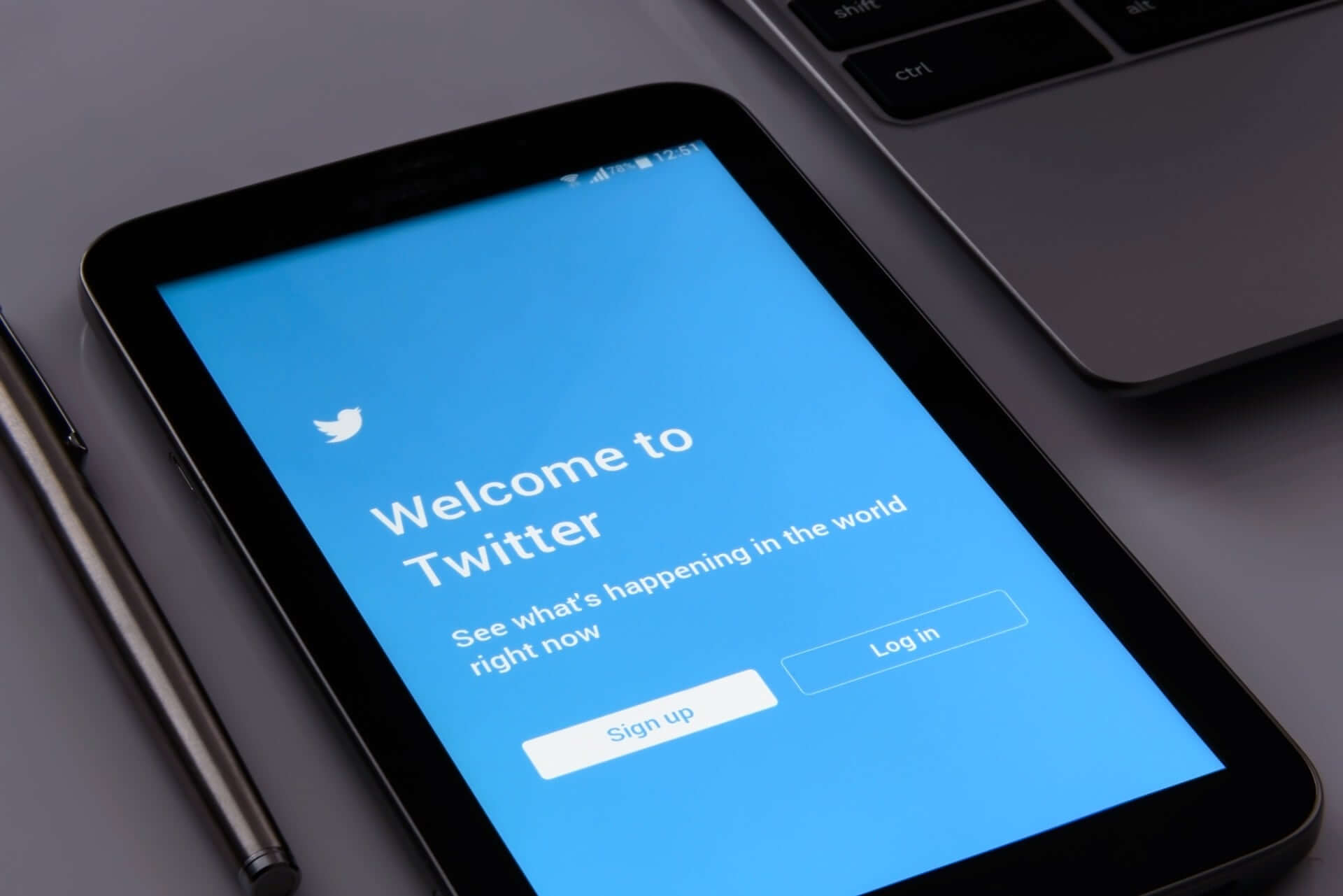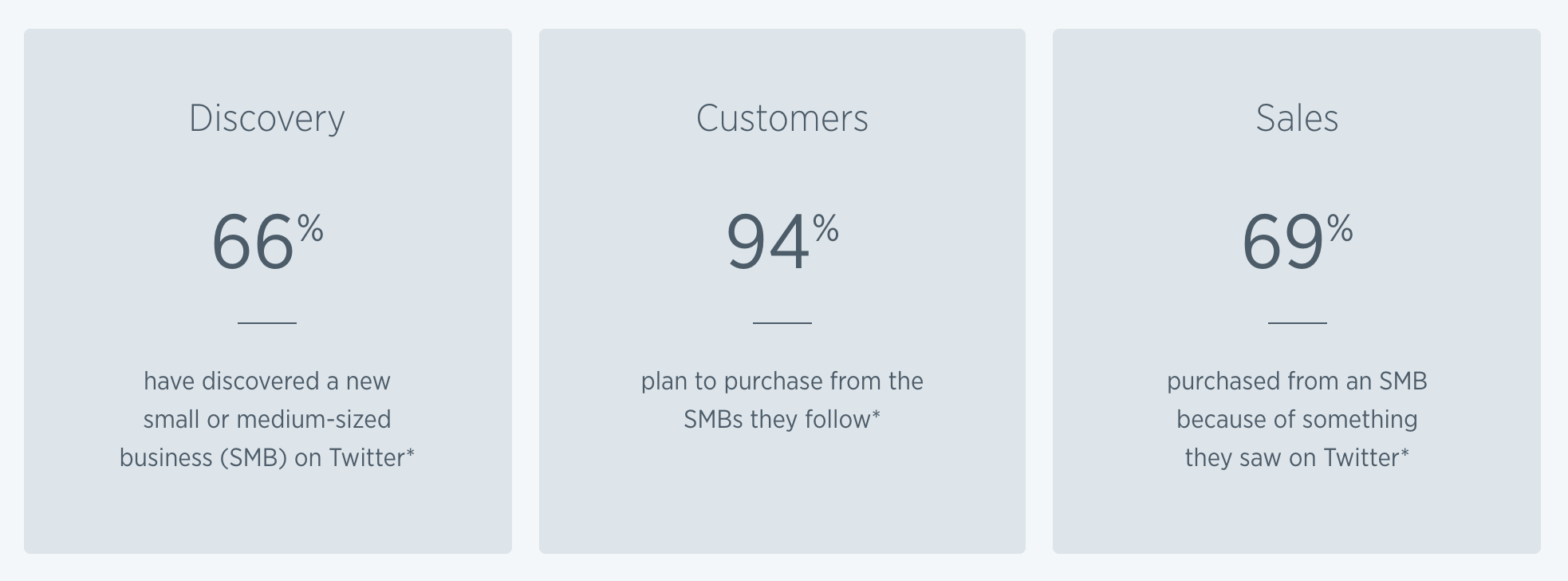Whenever we turn the TV on or listen to a radio, we hear about Twitter. The media is constantly quoting the tweets that politicians and celebrities sent out and the way the people of Twitter reacted to them. All this can make Twitter seem like a place where famous people argue and can get attacked by masses.
Twitter is also not meant so much for friends and family as the rest of the platforms we are all familiar with. The feed can look a little messy for a first-time tweeter and the way (some) people communicate with each other can seem strange. When you log on, you will probably see a lot of memes, weird hashtags and people’s responses might not make much sense to you at all.

I don’t blame you. I felt the same when I was first introduced to Twitter. The truth is that once I learned how to use Twitter, I fell in love with it. No matter what type of business you run, you can use Twitter to connect with new and existing customers, generate traffic to your website, increase brand awareness, promote brand advocacy, foster employee advocacy, provide timely customer service, and engage with industry influencers.
As seen below, according to the data published by Twitter, 66% of users have discovered a new small or medium-sized (SMB) business on Twitter, 94% of customers plan to to purchase from the SMBs they follow and 69% purchased from an SMB because of something they saw on Twitter.
How Exactly Can Twitter Help Your Small Business?
As mentioned in the beginning of this post, there are numerous ways that Twitter can be beneficial to you and your business. No matter if you are in B2B (Business-to-Business) or B2C (Business-to-Consumer) sales, Twitter can help you with the following: generating leads and traffic to your website, increasing brand awareness, providing timely customer service, connecting and building relationships with existing and potential customers, promoting brand advocacy, engaging with industry influencers, fostering employee advocacy, and conducting competitive research and much more.
Let’s talk about all these opportunities in detail below:
Generate Leads
If you share valuable content that’s educational and helpful, you will start to build a following on Twitter. When somebody starts to follow you, they opt-in to see what you share and are likely to take action.
To maximize your efforts, promote your username everywhere. Add a follow button to your website, include a link to your Twitter profile, in your email signature, and promote it on offline collateral such as business cards, or store signage.
[Tweet “78% of people who follow SMBs retweet content from that business. #SMB #SmallBusiness”]
The findings from Twitter’s ”Small Business Customer Insights Study” (2016) show that followers feel more positively about your business, help you expand your reach, and increase sales.
[Tweet “75% feel better about an #SMB after following and reading its tweets. #SmallBusiness”]
[Tweet “69% of respondents have purchased from an #SMB after following them on Twitter. #SmallBusiness”]
Nimble Tip: You can easily import all your Twitter followers to Nimble and use our segmentation feature to create groups for further nurturing. You will be able to segment your Twitter followers by using our quick filters like location, keywords in their bios, their amount of followers, their klout score, etc.
Generate Traffic to Your Website
Twitter gives you the opportunity to cross-promote your website content or your blog posts on Twitter, and drive traffic to your website. To make sure that your post stands out in people’s tweets, include an eye-catching image and make sure that you include relevant hashtags to extend your reach. You can also share a quote from your blog posts or interesting statistic.
Why You Need to Know What You Need to Know – https://t.co/Z3O9d7Gcxg by @LauraVEM #Marketing #MarketResearch pic.twitter.com/o79MXx0LSx
— Nimble (@Nimble) March 12, 2017
When sharing links on Twitter, it’s a good idea to use a URL a shortener. You can use free shorteners such as Google URL shortener or Bit.ly or if you are already using a social media tool like Buffer or Hootsuite, they have this functionality built in.
If you have some marketing money to invest into Twitter, look into using Twitter Website Cards to bring even more traffic to your website.
Increase Brand Awareness
If you regularly tweet informational and educational content with the intention to help instead of promoting, your following will grow. If your followers find your updates valuable, they will like them and retweet them, which gives you exposure and the opportunity to gain some new followers who might eventually turn into customers.
The goal is to be seen as a trusted authority and a resource. Promotional tweets should be in minority. Talking too much about how great our products and services are could turn people off. People like to follow accounts that bring value to them so take time to hand-pick your content and think twice before tweeting.
Here are some great examples of brands doing it right on Twitter. Follow them and get inspired. Notice that all of the brands mentioned below engage with their followers in a very human way. Being friendly and showing a human side encourages people to engage back.
Provide Timely Customer Service
According to the ”Small Business Customer Insights Study” done by Twitter, 85% of SMB Twitter users said that it’s important that businesses provide customer support on Twitter.
[Tweet “85% of #SMB Twitter users said that it’s important that businesses provide customer support on Twitter. #SmallBusiness”]
Twitter is public, so responding timely to your customers’ questions and helping them out can mean good publicity for you. There’s always the option to continue conversations offline or via Direct Message in case you need to request any sensitive information from your customers.
It’s always nice to see mentions from your happy customers on Twitter and it sure looks good to your prospective customers.
So impressed with customer service @Nimble CRM.
Esp Krystan – with the best job title EVER! #careninja pic.twitter.com/r7ecSWRKIQ— Claire Sandys (@clairesandys) March 14, 2017
Connect with Customers and Potential Customers
A great way to connect with current customers is to create a Twitter list of them, and either engage them directly from Twitter or in a social media listening tool such as Hootsuite. This list can be public, or as I personally prefer, private. Retweet, like and comment on appropriate posts and show your customers some love!
Identify the keywords and hashtags that your potential customers might be using when looking for the types of products and services you offer and use the advanced search on Twitter to find individuals that match your criteria. Feel free to create another Twitter list and start engaging with the people you added.
Try exploring your competitor’s Twitter lists or their followers or the people they follow as well. This can save you some time and you might learn a lot about how your competition does social media prospecting and the way they engage their current and prospective customers.
Participating in Twitter chats can also help you build relationships with your customers and gives you an opportunity to attract new ones.
Encourage Brand Advocacy
According to a survey done by GlobalWebIndex, 54% of participants would promote a brand online if their products were of a high quality. 49% said that they would be willing to promote their favorite brand if they were offered something in return, such as discount or a free gift.
Of those asked, 39% said that they would be happy to shout a brand out on Twitter if they received great customer service. If you can’t afford to offer a discount or a freebie at this moment, bringing your offline happy customers online might be a great strategy for you. Every time somebody says that they were happy with the service you provided, encourage them to share their experience with others on Twitter.
Foster Employee Advocacy
According to Edelman’s Trust Barometer that focused on the credibility of information about a company from various sources, people tend to trust regular employees much more than CEOs and other executives. Allow your employees to build their own personal brands and engage with people on Twitter. Tell them that you would appreciate if they followed your company on Twitter and if they feel like it, shared or retweeted some of your content once in awhile.
If you give your employees a free hand (perhaps with a bit of training) to use social media they might feel comfortable enough to start sharing work-related things like pictures from your company events and their own or your company’s achievements. When employees organically and with enthusiasm talk about your company online, it helps to humanize your brand and improves the public perception of your company.
Engage with Influencers
Twitter is the only social network where it is easy to connect with literally anyone and engage with them. This includes influencers. The great things is that they don’t even have to follow you back to engage back with you. In fact, you don’t even have to follow them either. I personally keep many Twitter lists of people that I do not follow. This goes mostly for competitors and politicians though. If you want to develop a relationship with somebody on Twitter, it is probably a good idea to start with a follow to let them know that you are interested in them.
If you are not using tools such as Klear, LittleBird or Traackr to discover influencers in your niche, take a look at the Advanced Search on Twitter. This search allows you to find people based on keywords relevant to your business, geographic location, specific hashtags, tweeting in a certain language, etc.
Competitive Research
Twitter is also awesome for spying on your competitors. As mentioned above, Twitter lists allow you to keep an eye on accounts that you don’t even follow. Keeping such lists gives an insight into how your competitors are interacting with customers, what kind of content they share, how their Twitter bios are structured, how much engagement they get, what their customers think of their products and services, etc. Monitoring your competitors’ social media activity also gives you the opportunity to engage with their prospective customers. This should of course always be done with grace and tact. If you see a person asking for a certain feature that your competitor does not have and you offer, it’s ok to jump in and say so. Remember, always be polite and empathetic.
Once you establish your Twitter lists you can either view them straight from Twitter or in our Signals tab in Nimble or in a social media listening tool like Hootsuite.


